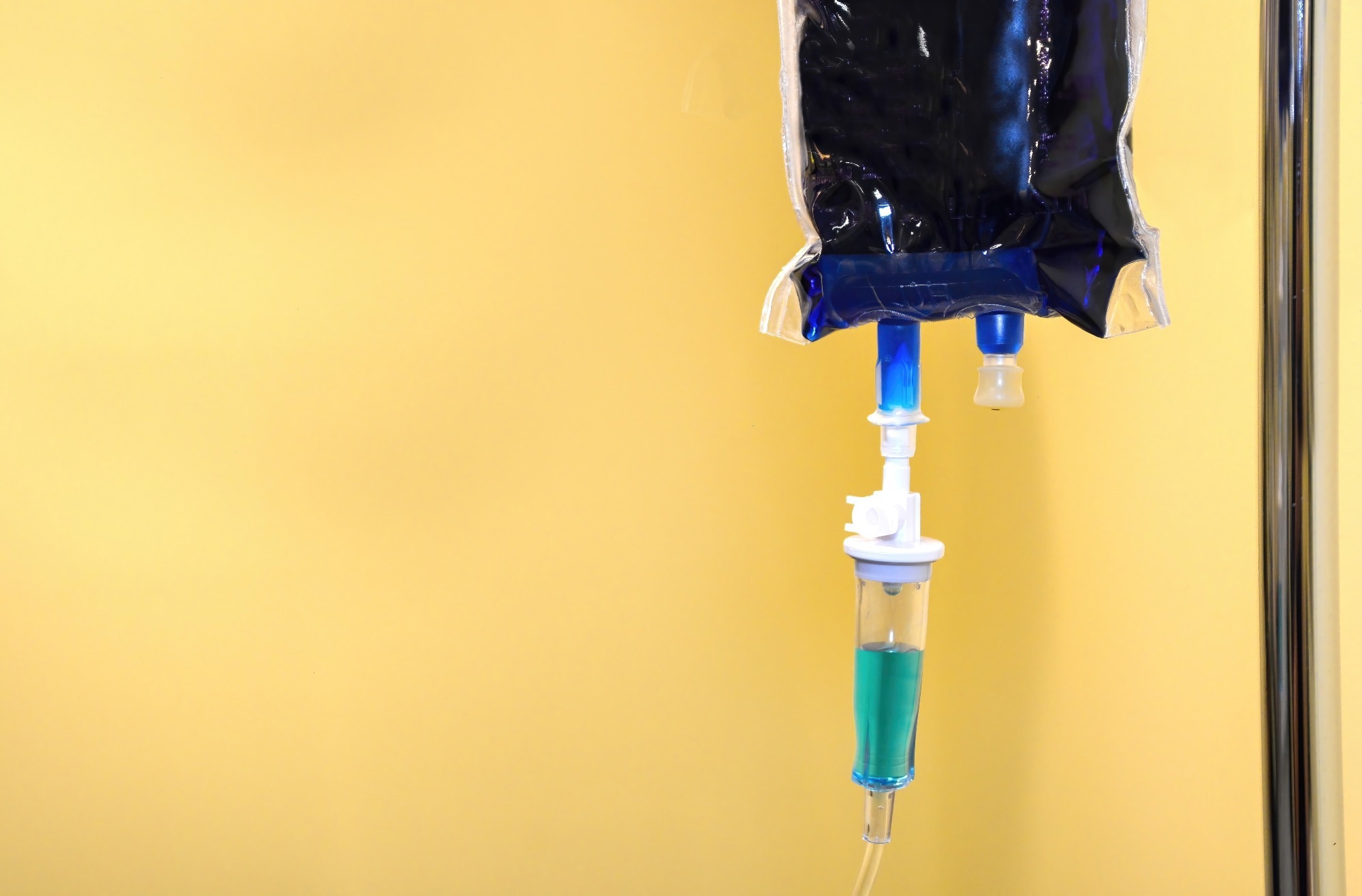Could an old drug offer new hope for septic shock? Discover how methylene blue might change critical care, but why doctors are still urging caution.
 Image Credit: AlteredR / Shutterstock
Image Credit: AlteredR / Shutterstock
Methylene blue is an aromatic compound used to treat methemoglobinemia, a rare blood condition that affects the oxygen-carrying capacity of red blood cells. The nitric oxide inhibitory action of methylene blue makes it a potential adjunctive candidate for treating septic shock, particularly in refractory cases. In a review article, published in the journal Cureus, the authors discuss the theoretical mechanisms, pharmacokinetics, clinical evidence, and practical considerations for the use of methylene blue in septic shock.
Background
Septic shock is a life-threatening condition characterized by profound circulatory and cellular/metabolic abnormalities that substantially increase mortality, with rates approaching 40%-60% in some cases. The condition is characterized by severe circulatory and cellular abnormalities that result in profound widening of blood vessels (vasodilation), reduction in blood pressure, and inadequate tissue oxygenation.
Norepinephrine, a neurotransmitter in the catecholamine family, is the first-line medication for treating septic shock, which helps increase blood pressure by constricting blood vessels. However, long-term or high-dose catecholamine therapy is associated with several health adversities, shifting the interest towards catecholamine-sparing strategies.
Current guidelines recommend vasopressin as a second-line medication in septic shock. Methylene blue has recently garnered attention as a potential adjunctive candidate for managing septic shock due to its inhibitory effect on the nitric oxide pathway, which plays a central role in the pathophysiology of septic vasodilation.
Mode of action of methylene blue
Methylene blue is an aromatic compound used both as a surgical dye and as a medicinal agent. It is available as a 1% (10 mg/mL) solution for intravenous administration in clinical settings. It has a half-life of approximately five hours in healthy individuals, and its concentration in the blood reaches the peak level within 30 minutes of intravenous administration.
In septic shock, proinflammatory cytokines and endotoxins profoundly upregulate inducible nitric oxide synthase (iNOS) enzyme, leading to excessive production of nitric oxide. The strong vasodilatory action of nitric oxide is the primary mediator of vascular smooth muscle relaxation and vasodilation seen in septic shock.
Methylene blue interrupts this chain of reactions through two mechanisms: direct inhibition of iNOS and subsequent prevention of nitric oxide production, or inhibition of soluble guanylate cyclase, an enzyme activated by nitric oxide and responsible for its vasodilatory effects. Methylene blue can also directly scavenge nitric oxide, and its antioxidant properties may help ameliorate the consequences of septic shock.
Methylene blue in septic shock
The first pilot study on the therapeutic efficacy of methylene blue in patients with septic shock was conducted in 1995, reporting a temporary increase in blood pressure with minimal effects on cardiac performance.
The first randomized controlled pilot trial was conducted in 2001, which reported that methylene blue, used as an adjunctive therapy, reduces the requirement for vasopressor therapy in septic shock patients without affecting oxygen delivery or other blood parameters.
Another trial, conducted in 2002, reported that methylene blue increases blood pressure but has no significant impact on cytokine levels or mortality in septic shock patients.
A renewed interest in methylene blue for the treatment of septic shock has been observed in recent years. A single-center, randomized controlled trial conducted in 2023 reported that high-dose methylene blue significantly reduces the requirement for norepinephrine-based treatment and shortens the length of stay in the intensive care unit (ICU) and hospital. However, no impact on mortality or severe adverse events was observed in the trial.
Besides its vasopressor-sparing action, a 2025 study using a 4 mg/kg bolus dose suggested a potential mortality benefit, though this effect was dose-dependent and not consistently observed across all trials. Preliminary evidence from a case series suggests that methylene blue may also show anti-inflammatory effects in septic shock patients treated with norepinephrine and vasopressin.
A 2025 trial comparing methylene blue and vasopressin as adjunctive medications found that vasopressin is more effective than methylene blue beyond the initial 6-hour window in reducing the need for norepinephrine, improving lactate levels, and enhancing organ function.
Large-scale meta-analyses conducted in 2024 reported low-certainty evidence suggesting methylene blue might reduce mortality risk, though one analysis included non-septic populations. The analyses also indicated increased blood pressure and systemic vascular resistance, and reduced ICU and hospital stay duration in patients with septic shock.
Regarding the optimal dosing of methylene blue, existing evidence suggests that higher bolus doses of methylene blue (e.g., 4 mg/kg) may provide mortality benefits in patients with septic shock specifically, though both high and low doses reduced vasopressor requirements. Regarding the optimal timing of administration, evidence suggests that methylene blue may be more suitable as a third-line agent than as a second-line replacement for vasopressin.
Safety profile
Methylene blue is generally well-tolerated when administered at recommended doses, i.e., 1-4 milligrams per kilogram body weight. Critical safety considerations include:
- Absolute contraindications in patients with G6PD deficiency or using serotonergic medications
- Must be diluted in 5% dextrose (not normal saline) to avoid precipitation
However, in some cases, it can cause mild to moderate health adversities, including blue-green discoloration of urine, skin, and mucous membranes, hemolytic anemia, serotonin syndrome, and cardiac arrhythmias.
Future directions
Overall, current evidence suggests that methylene blue has adjunctive benefits in patients with septic shock, including a reduced need for vasopressors such as norepinephrine and a shorter duration of ICU and hospital stays. However, it is not currently supported as a replacement for established second-line agents like vasopressin. Further studies are needed to establish its role in clinical practice, particularly as a third-line intervention.
Future studies should focus on determining the optimal dosing regimens, timing of administration, infusion rates, and duration of therapy. It is also essential to identify specific patient populations who might benefit most from this intervention using predictive biomarkers or clinical characteristics.